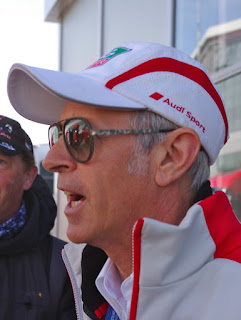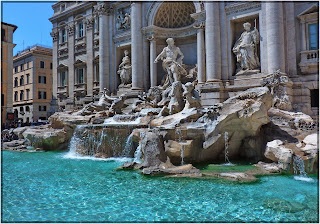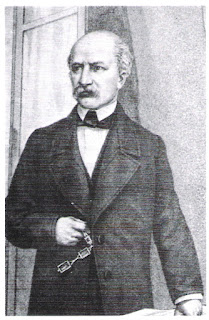Florentine artist created masterpieces for his home city
 |
| Bartolomeo Ammannati sculpted the Fountain of Neptune in Florence |
Ammannati began his career as a sculptor, carving statues in a number of Italian cities during the 1530s.
He trained first under Baccio Bandinelli and then under Jacopo Sansovino in Venice, working with him on the Library of St Mark, the Biblioteca Marciana, in the Piazzetta.
Pope Julius III called Ammannati to Rome in 1550 on the advice of architect and art historian Giorgio Vasari. Ammannati then worked with Vasari and Giacomo da Vignola on the Villa Giulia, which belonged to the Pope.
In the same year, Ammannati married the poet Laura Battiferri and they spent the early years of their marriage in Rome.
Cosimo I de' Medici brought Ammannati back to Florence in 1555, and it was where he was to spend the rest of his career.
His first job was to finish the Laurentian Library begun by Michelangelo. He interpreted a clay model sent to him by Michelangelo to produce the impressive staircase leading from the vestibule into the library.
 |
| The garden entrance of the Ammannati Courtyard at the Palazzo Pitti in Florence |
His other major works in Florence are the Bridge of Santa Trinità over the Arno and the Fountain of Neptune in the Piazza della Signoria. It is believed the sculptor modelled Neptune’s face on that of Cosimo I de' Medici.
As he became older Ammannati was influenced by the philosophy of the Jesuits and turned away from sculpting nude statues in order to create more austere buildings.
Ammannati’s wife, Laura, died in 1589 and he attempted to have a final anthology of her poetry compiled, but he died in Florence in 1592 before it was completed. He left all his possessions to the Jesuits and was buried in the same church as his wife, the Church of San Giovannino degli Scolopi in the San Lorenzo district of Florence, which he had himself designed for the Jesuits.
| The view from Piazza Desiderio in the centre of Settignano |
Settignano, where Ammannati was born, is a hilltop village northeast of Florence with wonderful views that have attracted tourists for years. Three other Renaissance sculptors were born there, Desiderio da Settignano, Bernardo Rossellino and Antonio Rossellino. The young Michelangelo lived there for a time with a sculptor and his wife in a farmhouse, which is now known as Villa Michelangelo. Mark Twain and his wife stayed in Settignano in the 1890s and the writer wrote that their villa had the ‘most charming view to be found on this planet.’ Gabriele D’Annunzio bought a villa on the outskirts of Settignano in 1898 to be nearer to his lover, Eleonora Duse, who was living there.
| The Fountain of Neptune in front of the Palazzo Vecchio in Piazza della Signoria |
The Fountain of Neptune in front of the Palazzo Vecchia in Piazza della Signoria in Florence is one of Ammannati’s most famous sculptures. Created in 1575, it features the Roman sea god Neptune surrounded by water nymphs and it was designed to commemorate Tuscan naval victories. The work was originally assigned to Baccio Bandinelli after Cosimo I de' Medici invited designs to be submitted in a competition, but Bandinelli died before he could start work and Ammannati was asked to complete the project.
More reading:
Filippo Bruneleschi - genius behind the dome of Florence Cathedral
How Benvenuto Cellini made his mark on Florence
The story of Michelangelo's David
Also on this day:
1943: The birth of singer and TV presenter Raffaella Carrà
1946: The birth of former England football manager Fabio Capello
Home













